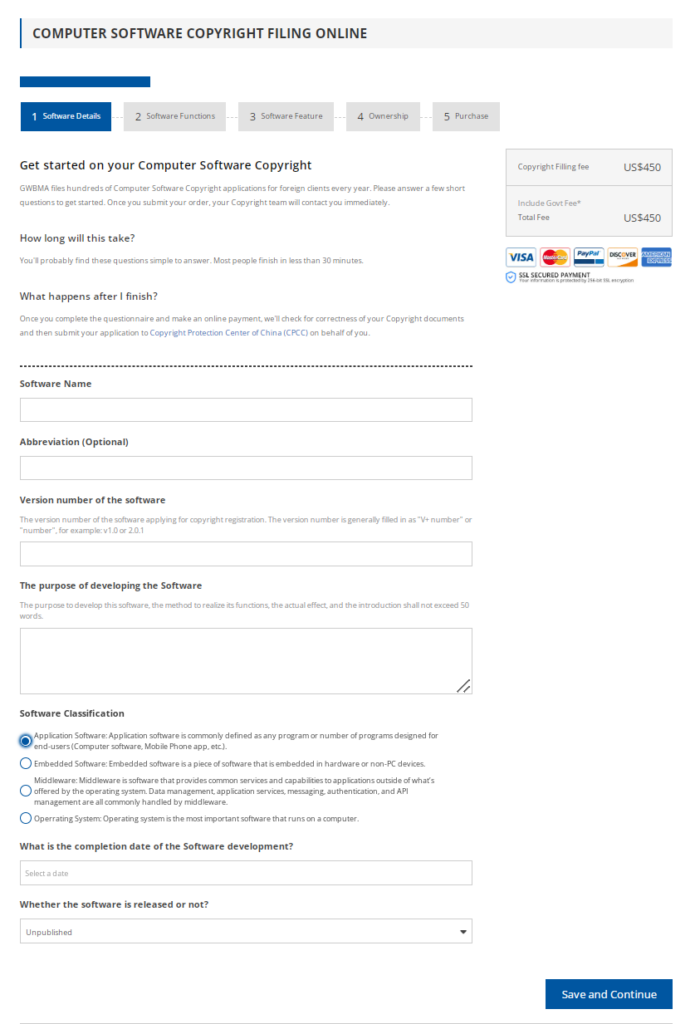Contents
Introduction:
With the rapid advancement of artificial intelligence (AI) technology, the global software development industry is facing new challenges and opportunities. Particularly in China and the United States, as leading centers of technological innovation, protecting software intellectual property (IP) has become increasingly important. This article explores the differences between China software copyright and US patent protection, focusing on protection scope, application processes, protection durations, and international recognition, and examines future trends through a comparative analysis.
What Are Software Copyright and Patents: Distinctions Between China and the US
In China, software copyright primarily protects the source code and related documentation. Developers can quickly submit applications through an online system to gain legal protection. This mechanism is well-suited to the needs of the AI era, as rapid copyright application prevents code misuse by AI technology. The “Regulations on the Protection of Computer Software” in China stipulates that software copyright protection lasts for the author’s lifetime plus 50 years after their death.
In contrast, the US protects software through patent law, covering innovative functions and implementation methods. Patent protection is broader but involves a complex and costly application process, often taking several years to get approval. The typical duration of software patent protection in the US is 20 years from the application date. This protection method is suitable for companies needing to safeguard core technologies and innovative methods.
Distinction Between China and the US:
- China: Protects primarily the source code and documentation, granting exclusive rights for copying, distribution, and display.
- US: Protects innovative functions and implementation methods through patent law, covering specific technical solutions and methods.
The differences reflect the varying legal systems of the two countries, with China focusing on source code and documentation protection, while the US covers a broader range of technology and methods.
China Software Copyright and US patent: Processes
Application Processes:
In China, the software copyright application process is relatively straightforward. Developers can submit applications through an online system, only needing to provide the source code and related documents to obtain a copyright certificate in a short time. This convenience makes China a preferred destination for global developers seeking quick legal protection.
In contrast, the US software patent application process is more complex. Applicants need to submit detailed technical descriptions and undergo strict reviews, requiring significant time and financial investment. The entire process may take years, which is less ideal for developers needing immediate protection for their innovations.
Protection Durations:
China’s software copyright protection lasts for the author’s lifetime plus 50 years after their death, ensuring long-term protection of developers’ creative and labor results.
In the US, software patent protection typically lasts for 20 years from the application date. After the protection period ends, the patent enters the public domain, allowing anyone to use the technology. Although the duration is shorter, it provides exclusive rights during the protection period, effectively preventing unauthorized use.
International Recognition:
China, as a member of the Berne Convention, ensures that registered copyrights are protected in other member countries. This offers a solid legal basis for the international protection of Chinese software copyrights. After registering a copyright in China, the work is also protected in other member countries of the Berne Convention, significantly enhancing its international impact.
US patents are only valid within the US. To obtain protection in other countries, applicants must apply for patents separately in those countries. This limitation means that developers wishing to protect their innovations globally need to invest more time and resources in multi-country applications.
GWBMA’s Rapid China Software Copyright Registration Service
GWBMA is a distinctive platform in the field of software copyright registration, providing fast and efficient services for global developers. Through its online marketplace, developers can fully purchase Chinese software copyrights online for only $450. This platform simplifies the application process, ensuring that developers can obtain copyright protection in a short period.
GWBMA’s service is not only convenient but also efficient, offering robust legal protection for developers. Especially in the rapidly evolving AI technology era, copyright protection becomes increasingly crucial. GWBMA’s service helps developers prevent their code from being misused by AI, safeguarding their intellectual property.
The platform’s advantage lies in its global applicability. No matter where developers are located, they can complete copyright applications through GWBMA’s online system. The platform provides comprehensive support, addressing various issues and enabling international developers and companies to easily tackle copyright protection challenges. GWBMA’s efficient service not only boosts developers’ confidence but also allows them to focus on innovation and development, thereby driving technological progress.
Conclusion:
As AI technology advances, developers need faster and more effective copyright protection mechanisms. China’s copyright protection system offers a viable solution, helping developers ensure their code is not misused. Specific cases and success stories demonstrate the advantages of rapid copyright application, boosting developers’ confidence. The differences between China and the US in software copyright and patent protection determine the factors that enterprises need to consider when choosing IP protection strategies. Understanding these differences is crucial for developers’ success in the global market.
Moreover, through GWBMA’s service, developers and companies worldwide can swiftly and conveniently register Chinese software copyrights, enjoying comprehensive legal protection to prevent their code and ideas from being misused. This efficient protection mechanism is particularly important in the AI era, providing developers with solid assurance.



